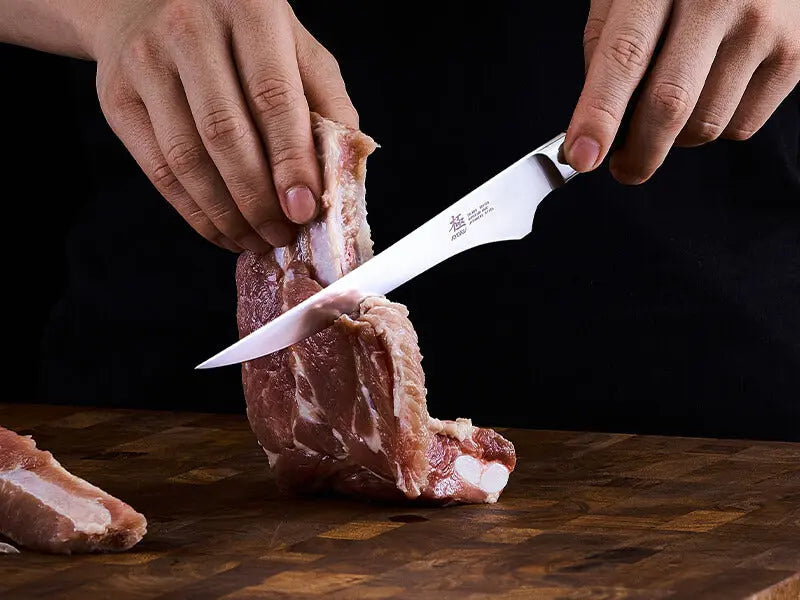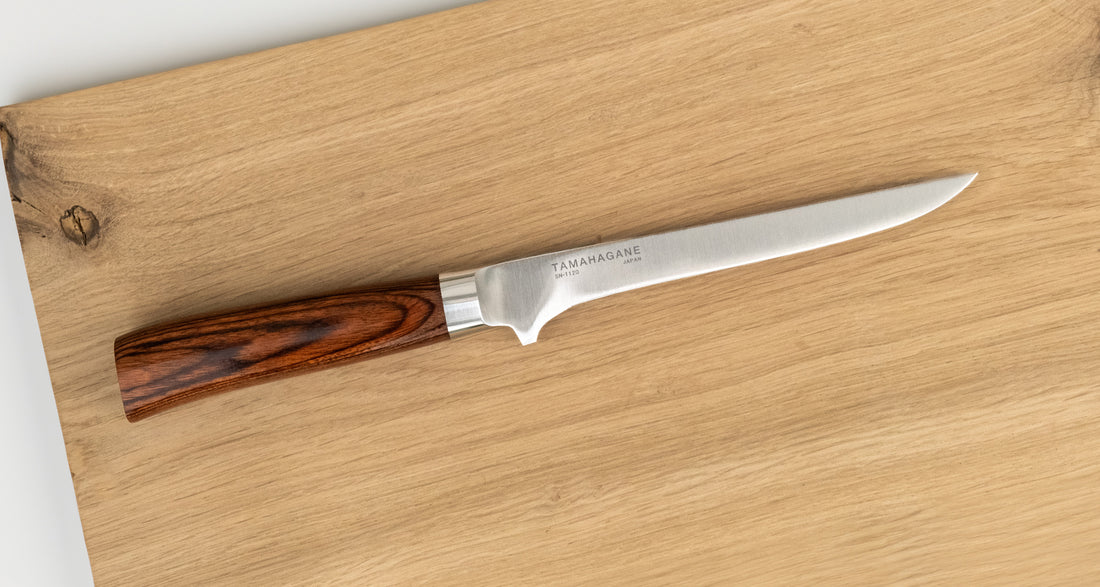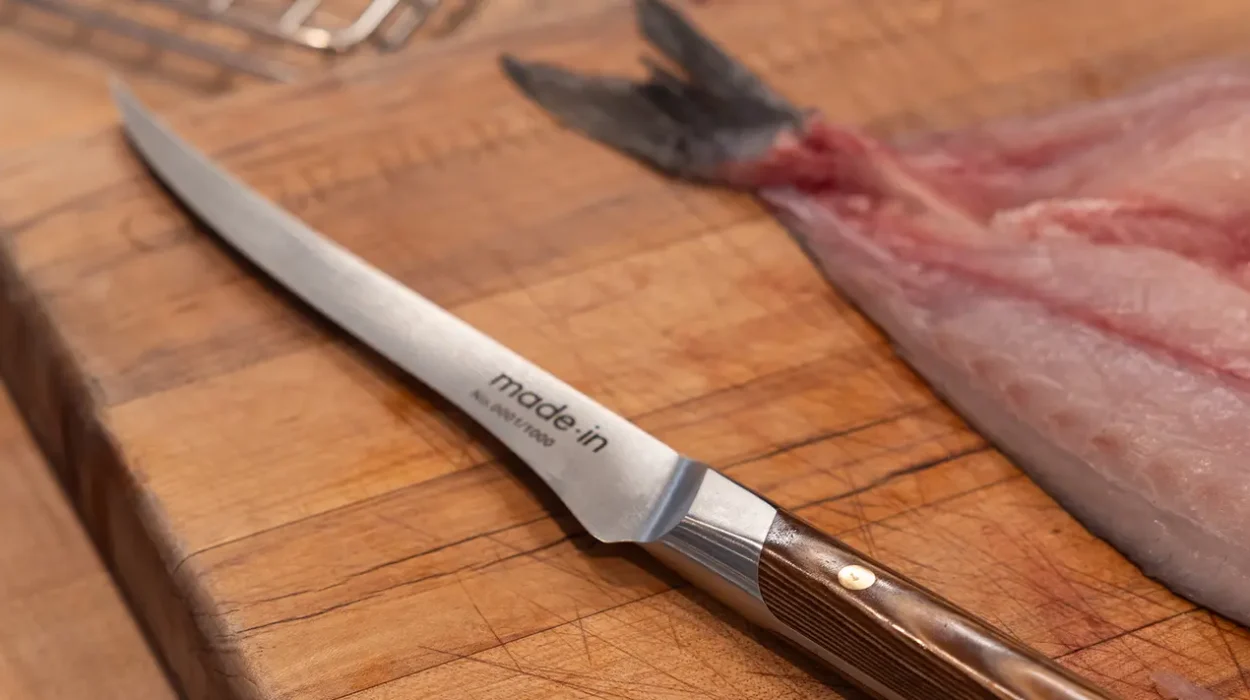When it comes to precision in the kitchen, understanding the difference between boning and carving knife is crucial. Whether you’re a seasoned chef or a home cook, the right knife can make all the difference in preparing your meals. In this article, we delve into the distinct features that set these two essential kitchen tools apart.

What is a Boning Knife?
A boning knife is a specialized tool used primarily for removing bones from meat, fish, and poultry. Its thin and flexible blade allows for precise cuts close to the bone, making it an indispensable tool for butchers and chefs alike. To learn more about the versatility of boning knives, check out this comprehensive guide from Wikipedia.
What is a Carving Knife?
In contrast, a carving knife is designed for slicing cooked meats, such as roasts, poultry, and hams. Its long, narrow blade ensures clean and even slices, enhancing the presentation of your dishes. Discover the variety of carving knives used in professional kitchens at Shanzu Chef’s blog.
Key Differences Between Boning and Carving Knives
Blade Design and Flexibility
The blade design is one of the most notable differences. Boning knives feature a narrow, flexible blade, ideal for maneuvering around bones. Carving knives, however, have a long, rigid blade designed for slicing through cooked meat efficiently.
Intended Use
Understanding the intended use of each knife is vital. Boning knives are primarily used for raw meats, while carving knives are best suited for cooked meats. This distinction is crucial for selecting the right tool for your culinary needs.
Handle and Grip
The handle and grip of a knife significantly impact its usability. Boning knives often have ergonomic handles, providing a secure grip during intricate tasks. Carving knives, on the other hand, are designed for comfort during extended use, especially when slicing large cuts of meat.
Choosing the Right Knife for Your Needs
Selecting between a boning and carving knife depends on your cooking habits and the types of dishes you frequently prepare. For those who often work with raw meats, a boning knife is essential. If you prefer serving roasts and hams, investing in a quality carving knife is wise. For insights into choosing the right knife, visit our detailed article on stainless steel boning knives.
Maintenance and Care
Proper Cleaning Techniques
Maintaining your knives involves more than just sharpening. Proper cleaning techniques are crucial to extend their lifespan. Always hand wash your knives and dry them immediately to prevent rust and corrosion.
Sharpening Tips
Regular sharpening is vital for maintaining the efficiency of your knives. Use a honing steel or a sharpening stone to keep your blades in top condition. For more tips, explore our guide on German knife safety tips.
Knife Safety
Practicing knife safety is essential in any kitchen. Always use a cutting board and ensure your knives are sharp to minimize accidents. For a deeper understanding of knife safety, consider our article on German knives in Michelin star kitchens.

FAQ
1. Can a boning knife be used for carving?
While a boning knife can be used for carving in a pinch, it is not ideal due to its flexible blade, which is not suited for slicing cooked meats evenly.
2. What is the best material for a carving knife?
High-quality stainless steel is often the best material for a carving knife due to its durability and ability to maintain a sharp edge.
3. How often should I sharpen my kitchen knives?
The frequency of sharpening depends on usage. Regular home cooks should sharpen their knives every few months, while professional chefs may need to sharpen them more frequently.
This article contains affiliate links. We may earn a commission at no extra cost to you.


